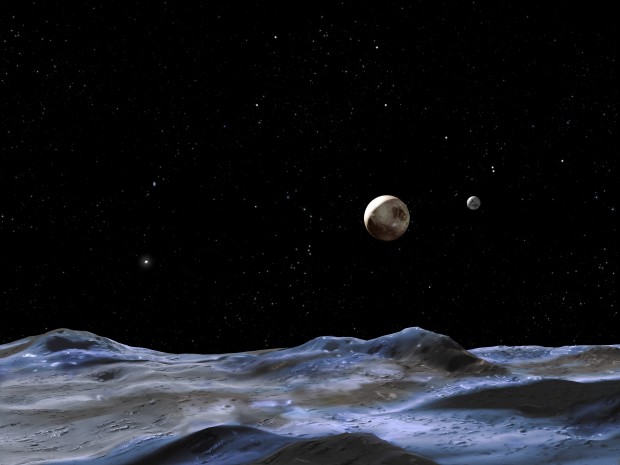
The once-and-future planet Pluto’s fortunes continue to whipsaw like those of a hapless reality-show contestant. Its loss of planetary status seemed to have been sealed by the 2006 discovery of a batch of similarly-sized planet-like objects in the same orbital neighborhood�one of which, later named Eris, was thought to be larger than Pluto. Rather than bring a whole new litter of tiny planets into the pantheon, the International Astronomical Union defined a new class of “dwarf planets,” demoting Pluto in the process. But as reported by Scientific American, new research seems to show that Eris, while more massive, is smaller in diameter than Pluto. The research makes clear that the remotest orbital reaches of the solar system, a region called the Kuiper Belt, is a crowded place, with hundreds of icy worldlets of widely varying composition. For now, the erstwhile ninth planet gains in status as the largest of these so-called dwarf planets. Whether this will be enough to secure Pluto a record contract remains to be seen.
 Gearfuse Technology, Science, Culture & More
Gearfuse Technology, Science, Culture & More



Pluto never stopped being a planet, and Eris is a planet as well. Dwarf planets are planets too, in spite of the controversial vote by four percent of the IAU, most of whom are not planetary scientists. Their decision was immediately opposed in a formal petition by hundreds of professional astronomers led by New Horizons Principal Investigator Dr. Alan Stern.
Good point, Laurel. And you remind us that nothing that the IAU, astronomers, or even Walt Disney has to say can produce any change in whatever Pluto actually is, all the way out there in the Kuiper Belt.